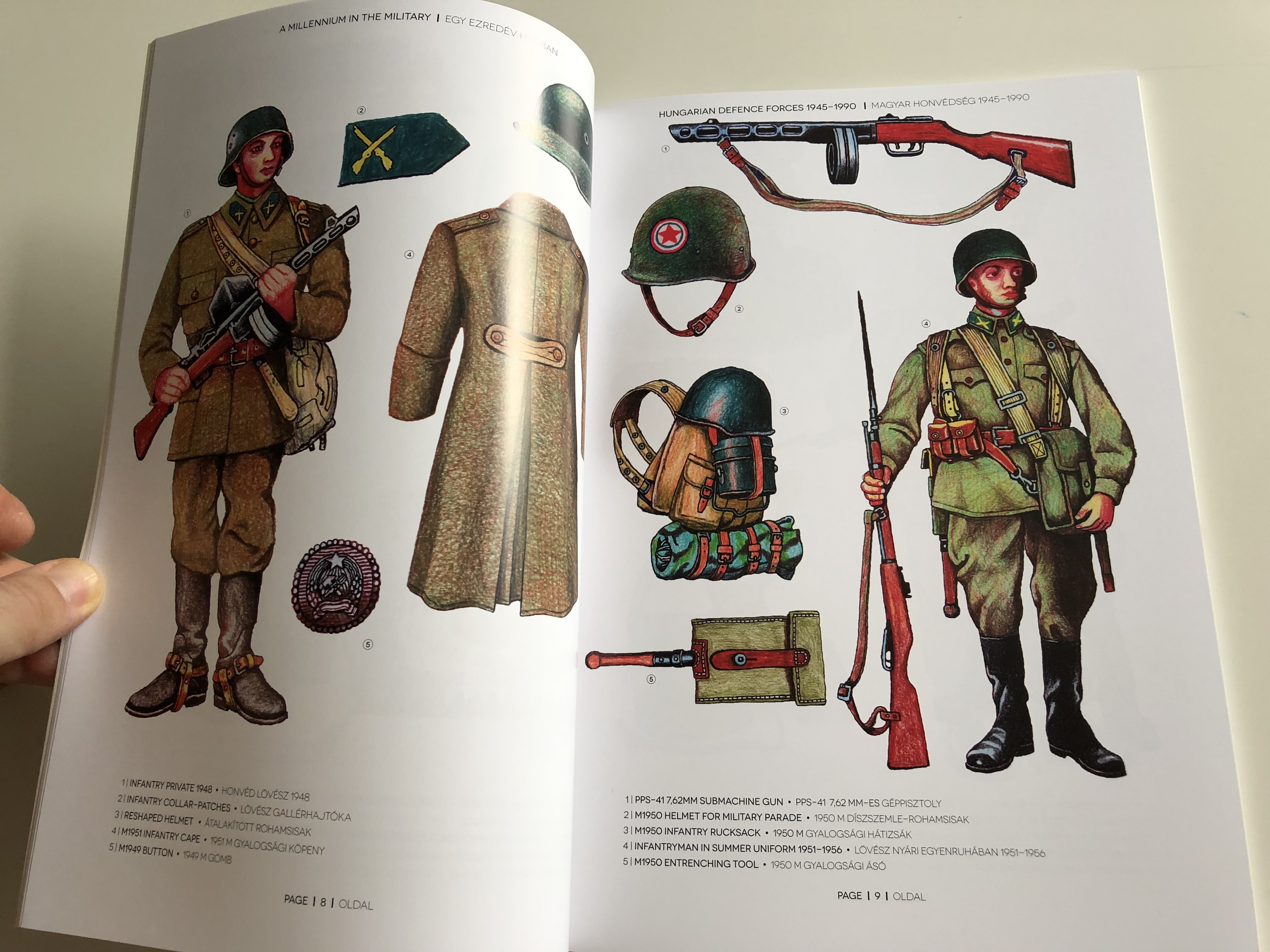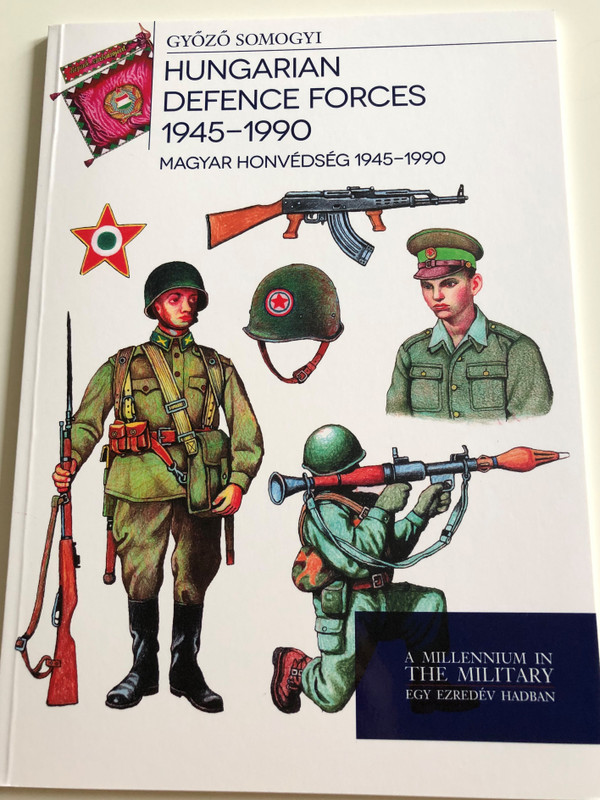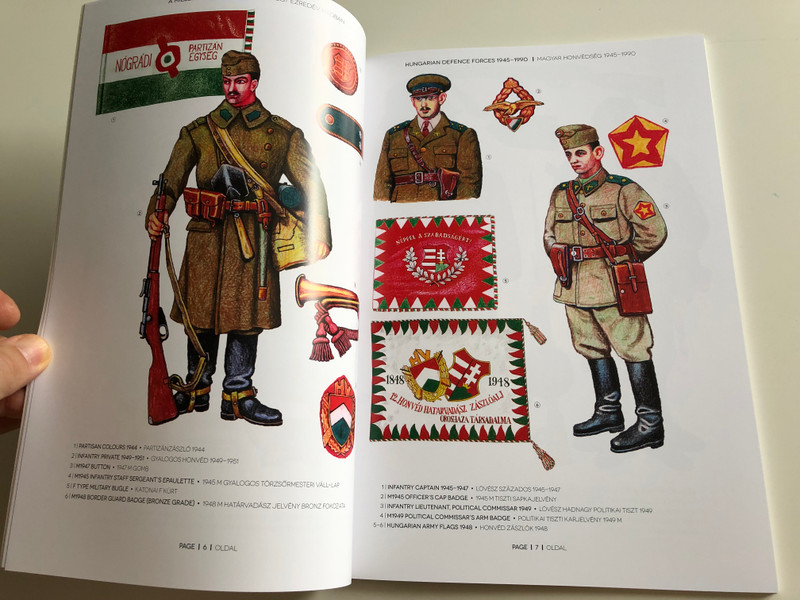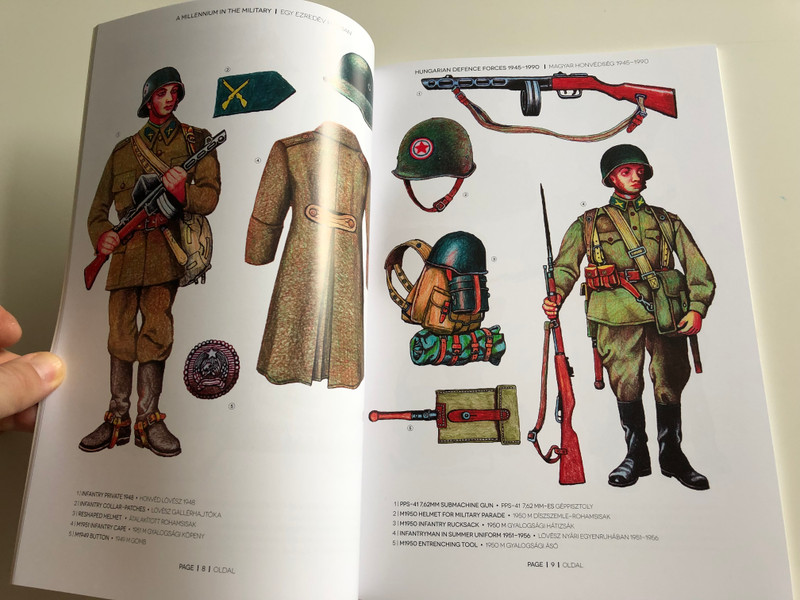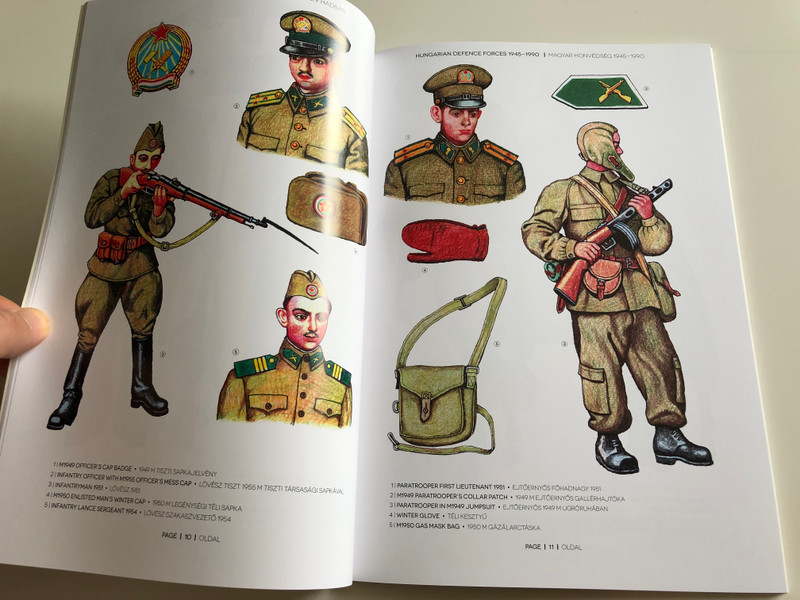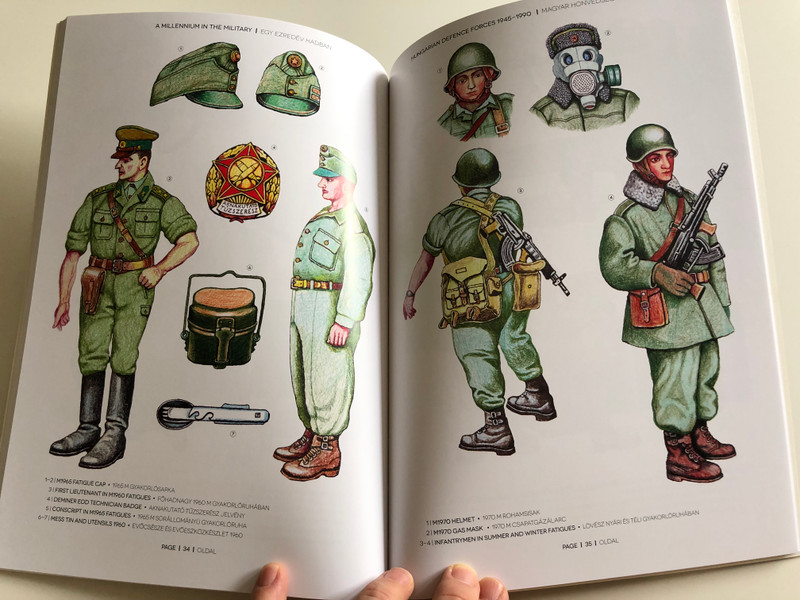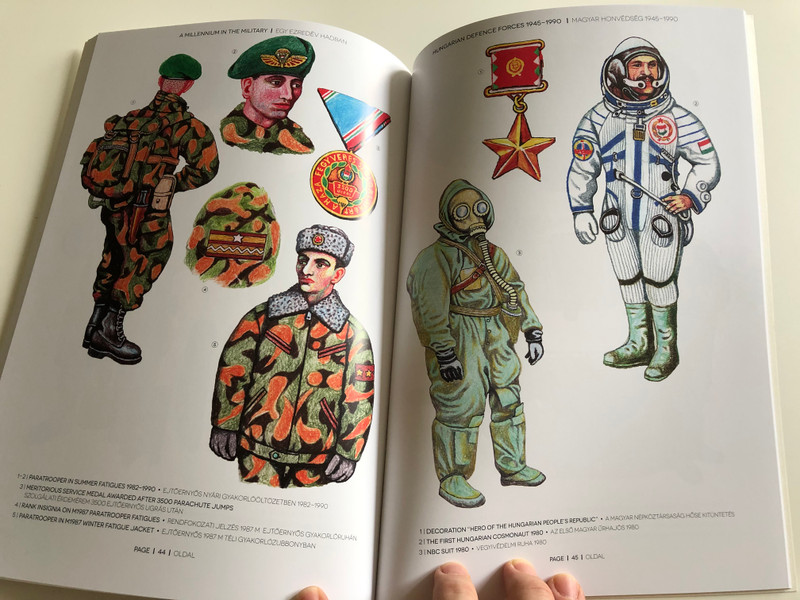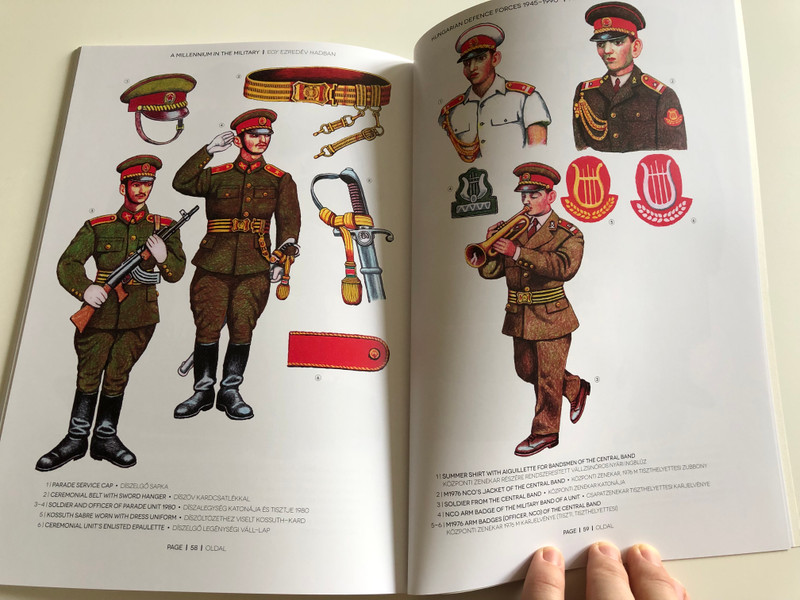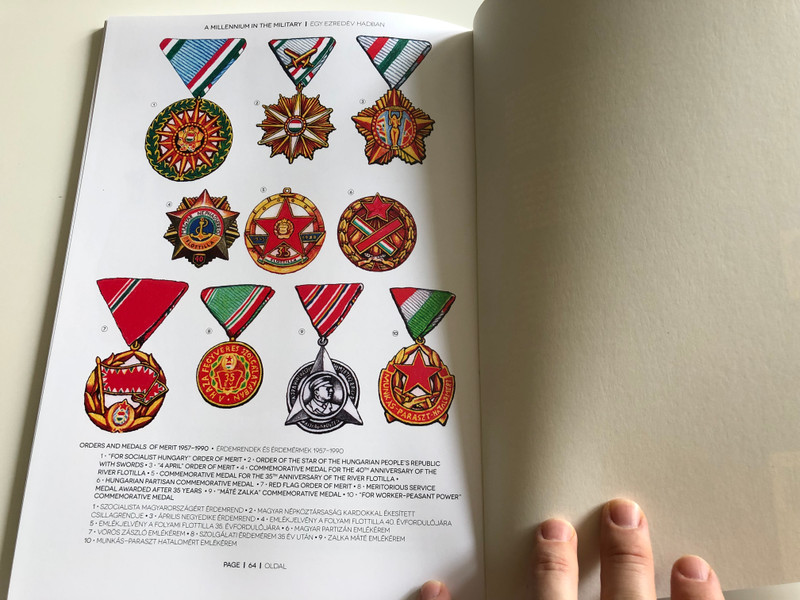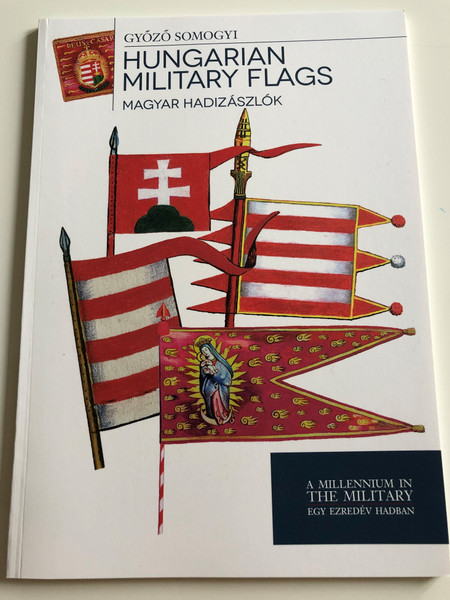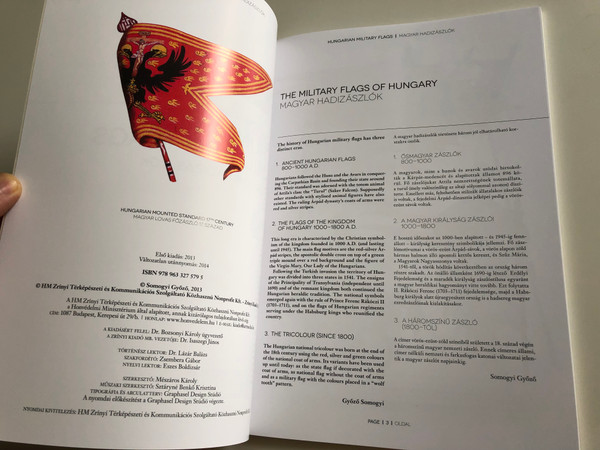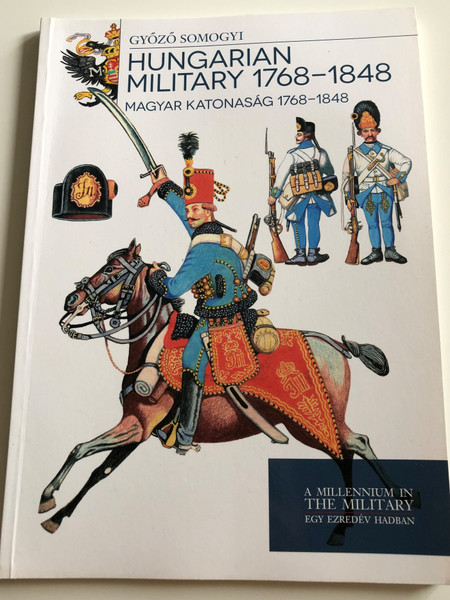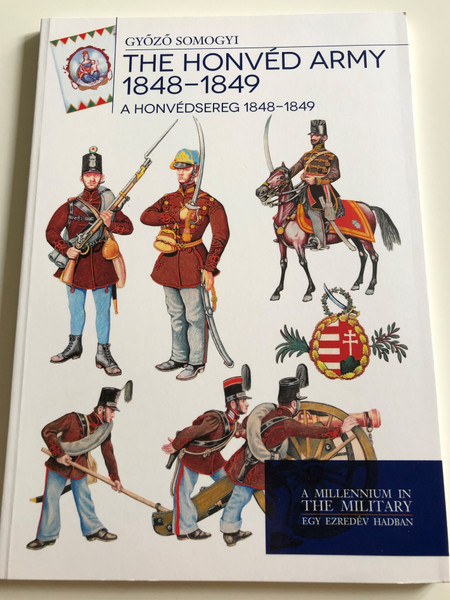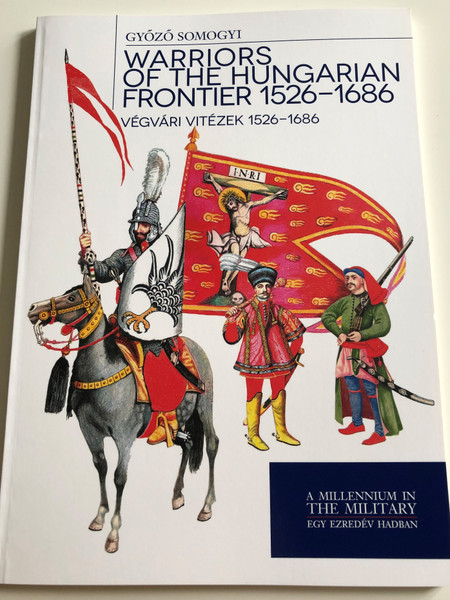Description
Hungarian Defence Forces 1945 - 1990 / Magyar Honvédség 1945-1990
A Millennium in The Military - Egy Ezredév Hadban
Paperback (2019)
ISBN: 9789633276990 / 978-9633276990
ISBN-10: 9633276993
Pages: 64
Publisher: HM Zrínyi
Language: Hungarian - English Bilingual
Overview / Áttekintés
Hungarian Defence Forces 1945 - 1990 by Győző Somogyi offers a detailed look at the history and development of the Hungarian military during the Cold War period. The book highlights the structure, uniforms, equipment, and military traditions that shaped Hungary's defence forces during this critical period. With meticulously researched illustrations and clear explanations, Somogyi provides an insightful portrayal of the challenges and transformations faced by the Hungarian army in the post-World War II era. This bilingual (Hungarian-English) publication makes the complex history accessible to a wider audience, including both historians and general readers with an interest in military history.
Magyar Honvédség 1945-1990 című könyvében Győző Somogyi a hidegháborús időszak magyar katonai történelmét és fejlődését mutatja be részletesen. A könyv a Magyar Honvédség szerkezetét, egyenruháit, felszereléseit és katonai hagyományait tárgyalja, amelyek ebben a kritikus időszakban alakították a magyar védelmi erőket. A gondosan kutatott illusztrációkkal és világos magyarázatokkal Somogyi bepillantást nyújt a magyar hadsereg által megélt kihívásokba és átalakulásokba a második világháború utáni évtizedekben. A kétnyelvű (magyar-angol) kiadvány lehetővé teszi a történelmi szakemberek és a katonai történelem iránt érdeklődő laikus olvasók számára, hogy hozzáférhető módon ismerkedjenek meg a téma szépségeivel.
About the Author / A szerzőről
Győző Somogyi (1942) is a historian, graphic artist, and experimental archaeologist. His lifelong passion for Hungarian military history has led him to produce accurate illustrations of historical military uniforms, equipment, and traditions. Somogyi is also an active re-enactor of Hungarian hussars, a role that has allowed him to test many of the clothing and gear depicted in his books. He has published over a dozen full-color albums in both Hungarian and German, showcasing his deep knowledge and artistic skills in military history.
Somogyi Győző (1942) történész, grafikus, és kísérleti régész. Életre szóló szenvedélye a magyar hadtörténelem iránt arra ösztönözte, hogy pontos illusztrációkat készítsen történelmi katonai egyenruhákról, felszerelésekről és hagyományokról. Somogyi emellett aktív hagyományőrző huszár, aki lehetőséget kapott arra, hogy kipróbálja a műveiben bemutatott ruhákat és felszereléseket. Több mint egy tucat színes albumot publikált magyar és német nyelven, amelyek a katonai történelem iránti mély tudását és művészi képességeit tükrözik.
Interesting Facts / Érdekességek
- The book examines the structure and key developments of the Hungarian Defence Forces between 1945 and 1990, providing insights into its role during the Cold War.
- A könyv a Magyar Honvédség 1945 és 1990 közötti fejlődését és struktúráját vizsgálja, bepillantást nyújtva annak szerepébe a hidegháború idején.
- With stunning illustrations and photographs, the book brings the uniforms, insignia, and history of Hungary's military to life.
- Lélegzetelállító illusztrációk és fényképek segítségével a könyv életre kelti a Magyar Honvédség egyenruháit, jelvényeit és történelmét.
- Győző Somogyi’s expertise as both a historian and re-enactor gives the book a unique authenticity and depth.
- Somogyi Győző történészként és hagyományőrzőként szerzett szakértelme különleges hitelességet és mélységet ad a könyvnek.
- The bilingual nature of the text ensures that the book reaches both Hungarian and international audiences, fostering a wider understanding of Hungary’s military history.
- A kétnyelvű szöveg lehetővé teszi, hogy a könyv mind a magyar, mind a nemzetközi közönség számára elérhetővé váljon, elősegítve Magyarország katonai történelmének szélesebb körű megértését.
Publisher / Kiadó
HM Zrínyi is a prominent Hungarian publisher that specializes in military history and related topics. Their books are known for their meticulous research, high-quality illustrations, and deep commitment to preserving Hungary's military heritage. HM Zrínyi’s publications have garnered the interest of historians, re-enactors, and enthusiasts of Hungarian military culture.
HM Zrínyi egy vezető magyar kiadó, amely a hadtörténelem és a hozzá kapcsolódó témák iránt érdeklődő szakemberek számára készít kiadványokat. Könyveik a precíz kutatás, a magas színvonalú illusztrációk és a Magyarország katonai öröksége iránti elkötelezettségük révén váltak ismertté. Az HM Zrínyi kiadványai a történészek, hagyományőrzők és a magyar katonai kultúra iránt érdeklődő rajongók körében is népszerűek.
We Value Your Feedback! / Értékeljük Visszajelzését!
Was Hungarian Defence Forces 1945 - 1990 an enlightening look at Hungary's military history during the Cold War? Share your thoughts on how the book deepened your understanding of Hungary’s military forces!
Segített-e a Magyar Honvédség 1945-1990 könyv abban, hogy jobban megismerje Magyarország katonai történelmét a hidegháború idején? Ossza meg véleményét, és mondja el, hogyan gazdagította a könyv a Magyar Honvédség megértését!
Hashtags
#HungarianDefenceForces #MagyarHonvédség #GyőzőSomogyi #ColdWarHistory #HungarianMilitaryHistory #MilitaryTraditions #HungarianArmy #MilitaryHeritage #HMZrínyi #HungarianHistory

